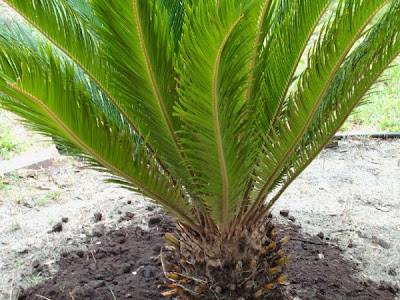
As busy as we all are in our daily lives, sometimes the most common-sense actions can be lost in the mix. Unfortunately, a momentary lapse in judgment can have a long-lasting effect --- depending on the situation. The saying: “better safe than sorry” can be applied in some way to just about any physically demanding activity I can think of. One example that comes to mind involves those who work often or exclusively with high-powered machinery (tractors, mowers, etc..). Those mechanized marvels help pros and homeowners alike get the job done, but are usually chock full of fast-moving, sharp pieces and parts that require an operator’s full attention to successfully and safely navigate from one task to the next.
No matter if you think your operating skills are beyond honing, it certainly doesn’t hurt to brush up every once in a while on proper procedure, whether you are a professional or if you are a backyard weekend warrior.
With all that being said, I found it appropriate to mention a safety-awareness initiative
Kubota Tractor Corp. is promoting. Part of this campaign includes its “Ten Commandments of Tractor Safety.”
According to the literature, the “Ten Commandments of Tractor Safety” are as follows:
1. Know your tractor, its implements, and how they work.
2. Use ROPS (rollover protective structures) and seat belt whenever and wherever applicable.
3. Be familiar with you terrain and work area --- walk the area first to be sure and drive safely.
4. Never start an engine in a closed shed or garage.
5. Always keep your power take-off (PTO) properly shielded.
6. Keep your hitches low and always on the drawbar. Otherwise, your tractor might flip over backwards.
7. Never get off a moving tractor or leave it with its engine running.
8. Never refuel while the engine is running or hot.
9. Keep all children off and away from your tractor and its implements at all times.
10. Never be in a hurry or take chances about anything you do with your tractor.
Click here to see more of Kubota’s take on the importance of tractor/equipment safety.
While these safety tips should already be ingrained in the heads of everyone who operates these machines (especially professionals), bad things can and do happen when we’re in a hurry, tired, distracted, or all of the above. In a situation where your tools can injure, maim, or even kill, if not used properly, a little extra precaution and preparation can go a long way in preventing such an occurrence.
Oh, and by the way, as part of Kubota’s safety message, they came up with a nice little safety prize promotional pack. The safety prize pack includes a
Kubota duffel bag and inside you will find:
·
A T-Shirt
·
LED Flashlight
·
Custom Puzzle and Kubota Safety Coloring Book (fun for the kids) and
·
The "Ten Commandments of Tractor Safety" brochure
Kubota was gracious enough to provide me with a safety prize pack to give away to one lucky reader of this blog. Interested in winning this item? Log into Twitter and go to my Twitter feed and be the first to Direct Message me the answer to this:
Out of the “Ten Commandments of Tractor Safety,” which commandment do you think is the most important one to remember? (Hint: There is no wrong answer, since they are all important. I just want to see who is paying attention).
Good luck and, more importantly, stay safe.
 Ahh, the holidays --- it’s the perfect time for giving. It’s not bad for receiving either. The other day, I was notified via eMail by Fresh From Florida that I had won a prize [pictured] they were giving away on their blog. Sweet! …Or, in this case, spicy. The package arrived yesterday, much to my delight. Having been (and being) a big fan of Everglades Seasoning products, I knew this “Gift Shack” had found a good home.
Ahh, the holidays --- it’s the perfect time for giving. It’s not bad for receiving either. The other day, I was notified via eMail by Fresh From Florida that I had won a prize [pictured] they were giving away on their blog. Sweet! …Or, in this case, spicy. The package arrived yesterday, much to my delight. Having been (and being) a big fan of Everglades Seasoning products, I knew this “Gift Shack” had found a good home.


 By the way, I snapped these shots from
By the way, I snapped these shots from



 Mulching around the entire root area is important for the method to be effective. Since the rainy season has arrived here, there will be plenty of precip to help the alkaloids sink in and do their work.
Mulching around the entire root area is important for the method to be effective. Since the rainy season has arrived here, there will be plenty of precip to help the alkaloids sink in and do their work.







